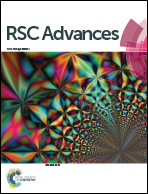Butylamino-functionalized cellulose nanocrystal films: barrier properties and mechanical strength
Abstract
Cellulose nanocrystals (CNCs), which are strong, rod-like constituents of plant cellulose, are promising materials for green packaging applications as the material is capable of forming tortuous network structures with efficient barriers against outside gases. Here, a two-step procedure based on periodate oxidation followed by reductive amination was used as a pretreatment to modify bleached birch chemical wood pulp. Individualized CNCs were obtained from three different butylamino-functionalized pulps by mechanical homogenization. The fabricated CNCs were utilized to form transparent barrier films with a vacuum filtration method. All the butylamino-functionalized CNC films showed capability to resist oxygen permeability even at high relative humidity (RH 80%), and values as low as 5.9 ± 0.2 cm3 μm per m2 per day per kPa were recorded for pure cellulose based film using tert-butylamino-functionalized CNCs. In addition a barriers against water vapor permeation and dynamic vapor sorption were determined up to relative humidities of 80 and 90%, respectively. For surface characterization of the films time-dependent contact angles and surface roughness were measured. The films had good mechanical characteristics with tensile strength of 105.7 ± 9.7 MPa, strain-to-failure of 6.4 ± 0.6% and a Young's modulus of 5.8 ± 0.8 GPa.


 Please wait while we load your content...
Please wait while we load your content...